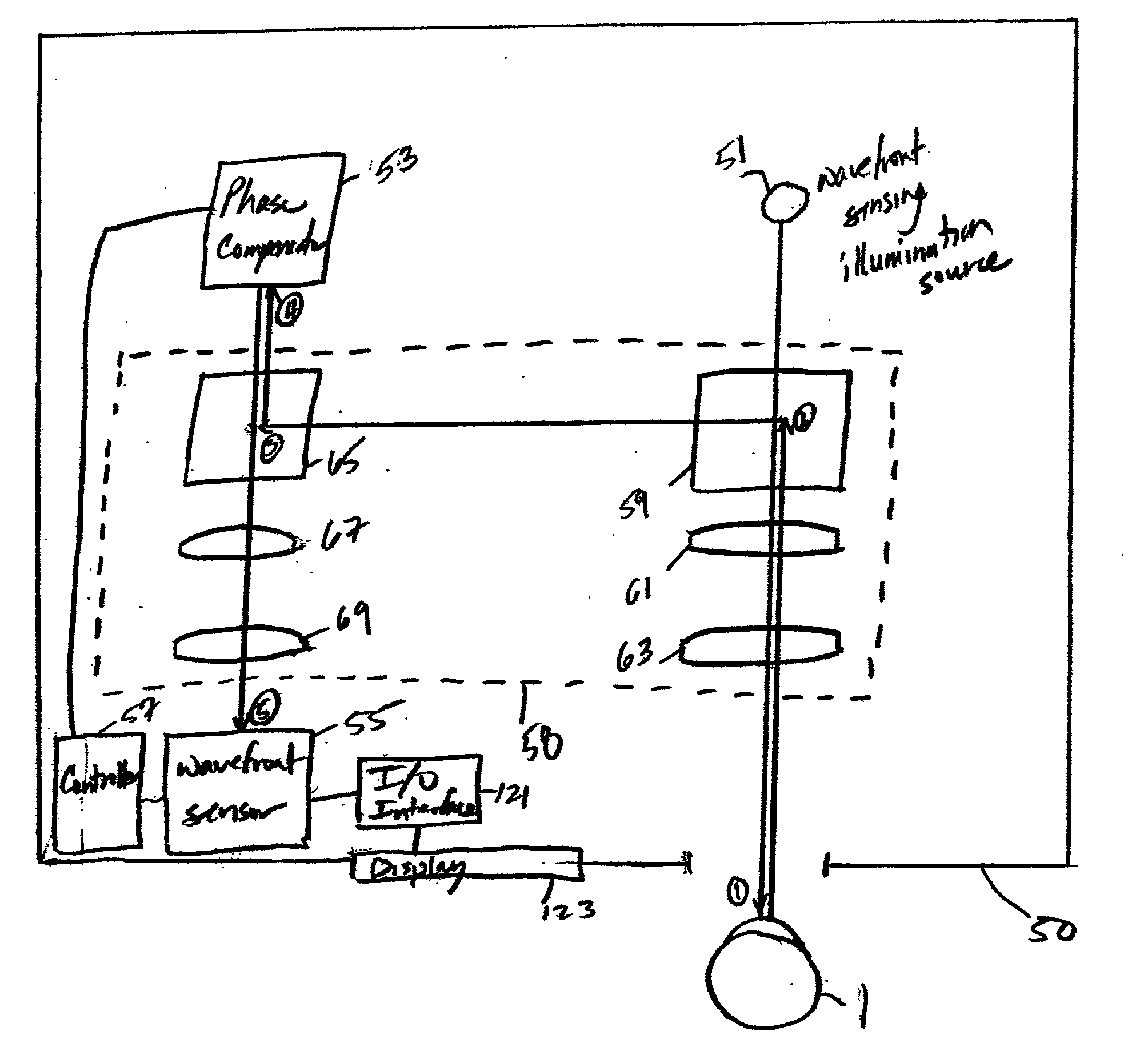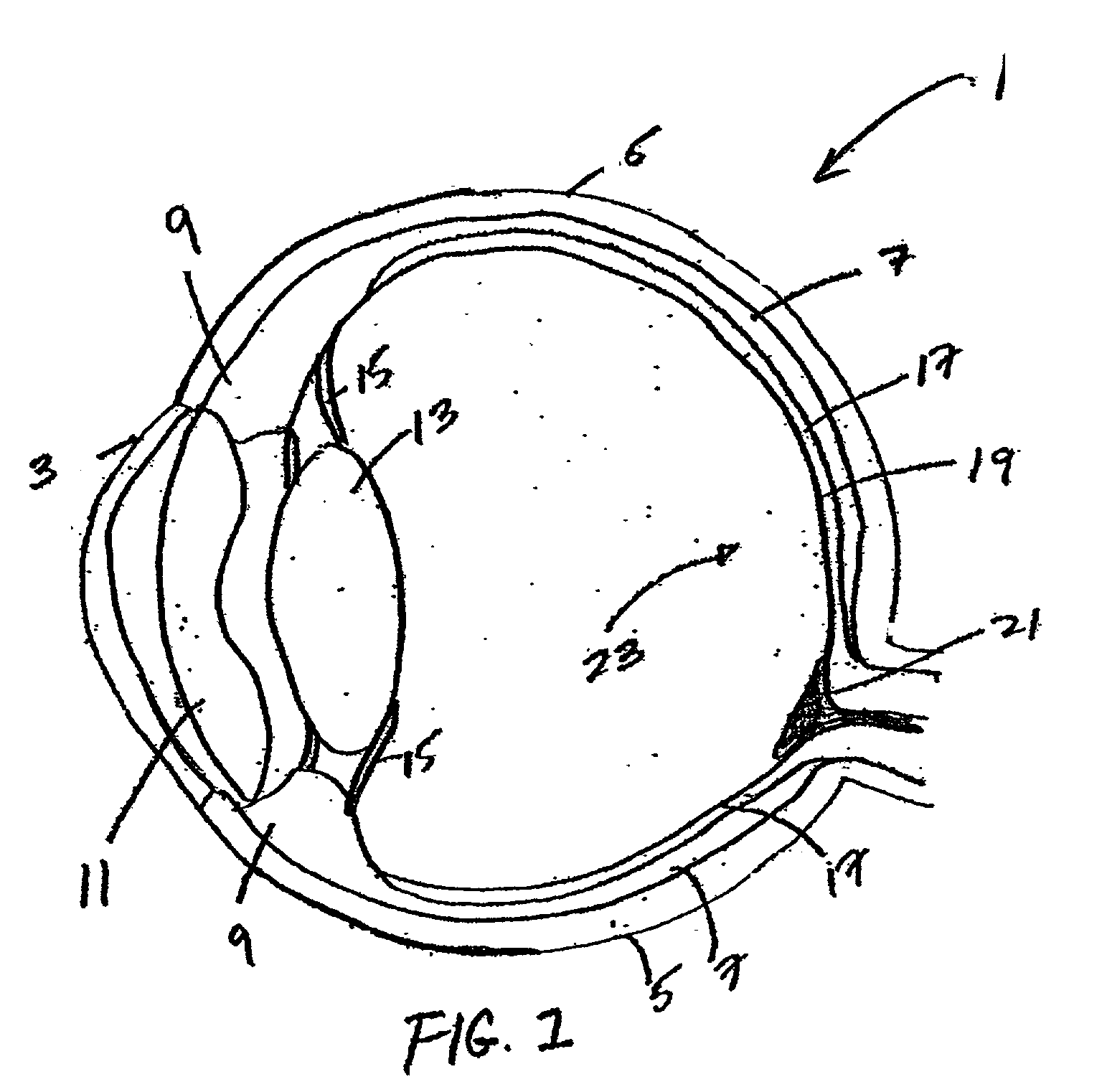Ophthalmic instrument having hartmann wavefront sensor with extended source
a wavefront sensor and ophthalmology technology, applied in the field of ophthalmology instruments, can solve the problems of inability to measure and characterize the higher order refractive error, and inability to compensate the aberrations of the ey
- Summary
- Abstract
- Description
- Claims
- Application Information
AI Technical Summary
Problems solved by technology
Method used
Image
Examples
Embodiment Construction
[0072] Referring to the figures in the accompanying Drawings, the preferred embodiments of the ophthalmic instruments of the present invention will be described in greater detail, wherein like elements will be indicated using like reference numerals.
[0073] According to the present invention, an ophthalmic instrument includes an adaptive optic subsystem that forms an image of a wavefront sensing illumination source on the retina of the eye under examination, which is reflected (thereby exiting the pupil of the eye as distorted wavefronts) and directed back to the instrument. An image of the reflected wavefronts (which represent retroreflection of the image formed on the retina and exit the pupil of the eye as distorted wavefronts) is created on a phase compensator (which preferably comprises a variable focus lens and a deformable mirror) and recreated at a wavefront sensor. The phase compensator operates to spatially modulate the phase of the image of the distorted wavefronts inciden...
PUM
| Property | Measurement | Unit |
|---|---|---|
| Size | aaaaa | aaaaa |
| Dimension | aaaaa | aaaaa |
| Correlation function | aaaaa | aaaaa |
Abstract
Description
Claims
Application Information
 Login to View More
Login to View More - R&D
- Intellectual Property
- Life Sciences
- Materials
- Tech Scout
- Unparalleled Data Quality
- Higher Quality Content
- 60% Fewer Hallucinations
Browse by: Latest US Patents, China's latest patents, Technical Efficacy Thesaurus, Application Domain, Technology Topic, Popular Technical Reports.
© 2025 PatSnap. All rights reserved.Legal|Privacy policy|Modern Slavery Act Transparency Statement|Sitemap|About US| Contact US: help@patsnap.com



